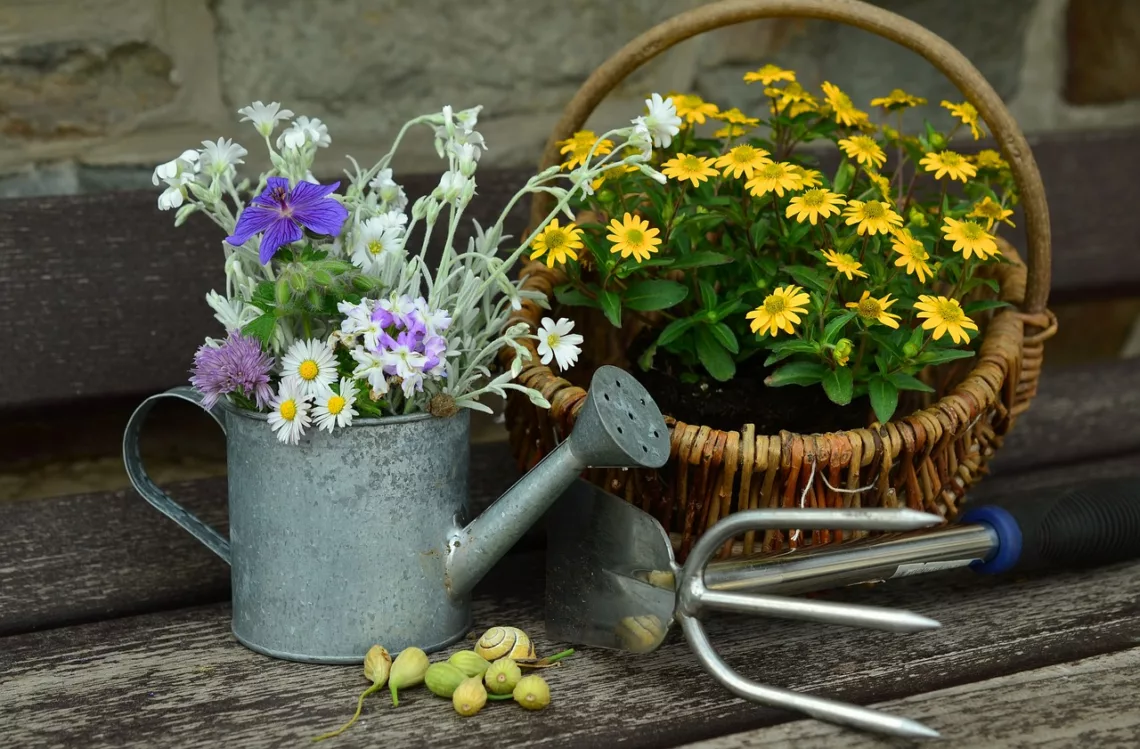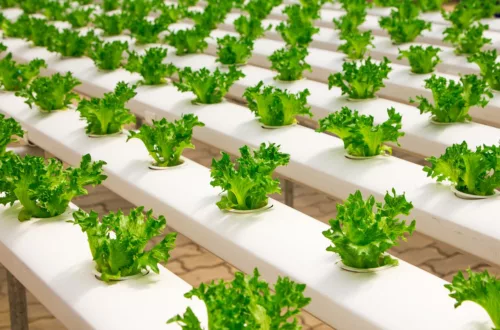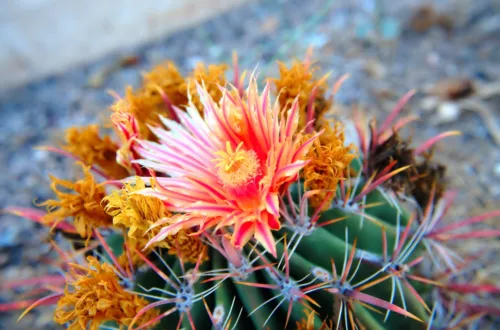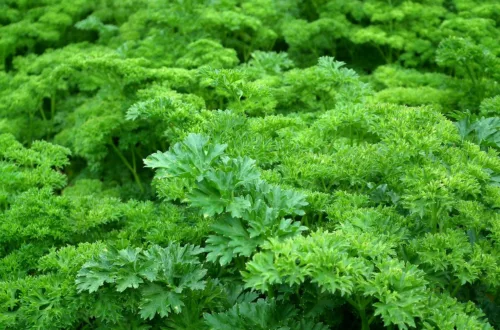Watering herbs can be a bit tricky, especially if you are a beginner gardener. Too much water can cause root rot, while too little water can lead to dehydration and wilting. So, how often should you water your herb plants? The answer depends on several factors, including the type of herb, the size of the container, and the weather conditions.
Generally, herb plants need to be watered when the top inch of soil feels dry to the touch. This means that you should stick your finger into the soil up to the first knuckle and check if it feels moist or dry. If it feels dry, it’s time to water your herbs. However, if it feels moist, it’s best to wait a day or two before watering again. Overwatering can lead to root rot, which can kill your herbs.
When growing your own herbs, it’s important to keep in mind that different herbs have different water requirements. For instance, herbs like basil, parsley, and cilantro prefer moist soil, while herbs like rosemary, thyme, and sage prefer drier soil. Additionally, the size of the container also affects how often you should water your herbs. Smaller containers dry out faster than larger ones, so you may need to water them more frequently. Finally, weather conditions also play a role in how often you should water your herbs. During hot and dry weather, your herbs may need more water than during cooler and more humid weather.
Understanding Herb Watering Basics~ How Often to Water Herbs
When it comes to growing herbs, watering is a crucial aspect that can make or break your plants. In this section, we will cover the basics of herb watering, including soil type and drainage, herb varieties and their needs, and sunlight and location.
Soil Type and Drainage
The best way to water herbs is to ensure the soil is moist but not waterlogged. A good rule of thumb is to water herbs when the top inch of soil feels dry to the touch. However, the frequency of watering depends on the soil type and drainage.
For sandy soil, you may need to water your herbs more often as it drains quickly and doesn’t retain moisture well. On the other hand, clay soil retains moisture for longer, so you may need to water less frequently. Well-drained soil is essential for healthy herb growth, so ensure your potting soil has proper drainage holes.
Herb Varieties and Their Needs
Different types of herbs have different water needs. Perennial herbs like rosemary and thyme are drought-tolerant and prefer drier soil, while annual herbs like basil and cilantro prefer moist soil. Mediterranean herbs like oregano and sage also prefer drier soil and can be damaged by overwatering.
Moisture-loving herbs like mint and chives prefer consistently moist soil, while drought-tolerant herbs like lavender and marjoram can handle dry soil. It’s essential to research your herb’s specific water needs and adjust your watering schedule accordingly.
Sunlight and Location
Herbs need enough light to grow, but direct sunlight can dry out the soil quickly. Full sun is ideal for most herbs, but if you don’t have access to a sunny windowsill or southern exposure, you can grow herbs under fluorescent lights.
If you’re growing herbs on a sunny windowsill, ensure that the window faces south and receives enough light. If you’re growing herbs in the kitchen, place them near a sunny window or under a fluorescent light.
By understanding the basics of herb watering, you can ensure your herbs thrive and provide fresh flavors for your meals.
Seasonal Watering Guide~ How Often to Water Herbs
As herb gardeners, we understand the importance of watering our plants to keep them healthy and productive. However, it can be challenging to determine how often to water our herbs. In this guide, we will provide you with some tips on how to water your herbs based on the season and their specific water requirements.
Growing Season and Watering Frequency~ How Often to Water Herbs
During the growing season, when your herbs are actively growing and producing new growth, they require more frequent watering. As a general rule of thumb, herbs growing in containers will need to be watered more often than those growing in the ground.
It’s best to water your herbs when the top inch of soil feels dry to the touch. This will prevent overwatering, which can lead to root rot. In hot weather, your herbs may need to be watered more frequently to prevent them from drying out.
Winter Care for Indoor Herbs~ How Often to Water Herbs
During the winter months, when the days are shorter and colder, your indoor herbs may require less water. It’s important to monitor the soil moisture level and adjust your watering schedule accordingly.
Indoor plants tend to dry out more slowly than outdoor plants, so be careful not to overwater them. It’s also a good idea to place your indoor herbs near a sunny window to provide them with enough light to continue growing.
In summary, the key to watering your herbs is to pay attention to their specific water requirements and adjust your watering schedule accordingly. By following this seasonal watering guide, you can ensure that your herbs stay healthy and productive throughout the year.
Watering Techniques and Tips~ How Often to Water Herbs
How Much Water to Use~ How Often to Water Herbs
When it comes to watering herbs, it’s important to find the right balance between giving them enough water and not overdoing it. The amount of water your herbs need will depend on a variety of factors, such as the size of your garden bed or pot, the type of herbs you’re growing, and the moisture level of the soil.
As a general rule, we recommend watering your herbs thoroughly, making sure that the soil is moist all the way through. For small pots, this might mean watering them once a day, while larger garden beds might need watering every few days. However, it’s important to keep an eye on the moisture level of the soil and adjust your watering schedule accordingly.
Signs of Overwatering and Underwatering~ How Often to Water Herbs
It’s important to keep an eye out for signs of overwatering or underwatering your herbs. Overwatering can lead to excess water in the soil, which can suffocate the roots and lead to root rot. Signs of overwatering include damp soil, a lot of water in the bottom of the pot, and a musty smell.
Underwatering, on the other hand, can cause your herbs to dry out and die. Signs of underwatering include dry soil, wilted leaves, and a lack of growth. To avoid these issues, make sure to check the moisture level of the soil regularly and adjust your watering schedule as needed.
Proper Watering Methods~ How Often to Water Herbs
When it comes to watering your herbs, there are a few good practices to keep in mind. First, always water at the base of the plant rather than from the top of the soil. This will help ensure that the water reaches the roots where it’s needed most.
Second, make sure to use a good water source. Tap water is usually fine, but if you’re concerned about the quality of your water, you might want to consider using filtered water or rainwater instead.
Finally, make sure to water your herbs slowly and evenly. This will help ensure that the water is absorbed evenly throughout the soil and that none of your herbs are left dry.
Maintaining Healthy Herb Plants~ How Often to Water Herbs
Growing healthy herbs requires more than just planting them in the ground. Proper maintenance is essential to ensure that your herbs thrive and produce the best results. In this section, we will discuss some key considerations for maintaining healthy herb plants.
Soil and Fertilizer Considerations
The soil is the foundation of your herb garden. It is important to ensure that your soil has the right balance of nutrients and organic matter to support healthy plant growth. Different plants have different needs, so it is a good idea to research the specific requirements of the herbs you are growing.
Adding organic matter, such as compost or well-rotted manure, to your soil can improve its structure and fertility. This can help to promote good drainage and aeration, which are important for healthy root systems. Fertilizers can also be used to supplement soil nutrients, but it is important to use them in moderation to avoid over-fertilizing your plants.
Monitoring Plant Growth and Health
Monitoring your herb plants regularly is an easy way to spot any issues before they become serious problems. Check your plants for signs of pests, disease, or nutrient deficiencies. Early detection can help you to take corrective action and prevent further damage.
Proper air circulation is important for maintaining healthy herb plants. Good air circulation can help to prevent fungal diseases and promote healthy growth. Consider planting your herbs in an area with good air flow, or using a fan to improve circulation.
Watering is another important consideration for maintaining healthy herb plants. Different plants have different water needs, so it is important to research the specific requirements of the herbs you are growing. Generally, it is best to water your plants deeply and infrequently, rather than giving them frequent shallow waterings. This can encourage new roots to grow deeper into the soil, which can help to support larger plants.
In summary, maintaining healthy herb plants requires attention to soil and fertilizer considerations, monitoring plant growth and health, and proper watering and air circulation. By following these guidelines, you can help your herbs to thrive and produce the best results.
Special Considerations for Specific Herbs~ How Often to Water Herbs
When it comes to herb gardening, one of the most important things to consider is how often to water your plants. While many herbs require much moisture, others prefer drier conditions. In this section, we’ll discuss some special considerations for specific herbs to help you keep your plants healthy and thriving.
Caring for Popular Herbs Like Basil and Mint
Basil and mint are two of the most popular herbs for cooking, and they both require adequate moisture to thrive. However, it’s important not to overwater these plants, as they can be susceptible to root rot in soggy soil. To keep your basil and mint plants healthy, water them deeply once a week, making sure the soil is moist but not waterlogged. During dry spells or hot weather, you may need to water them more frequently, but be careful not to let the soil become too wet.
Adapting to Unique Conditions
Some herbs, like lemon balm, prefer moist conditions, while others, like rosemary, thrive in drier soil. When it comes to watering your herbs, it’s important to pay attention to their individual needs and adapt your watering schedule accordingly. If you live in an area with cold temperatures or dry weather, you may need to water your herbs more frequently to keep them healthy. On the other hand, if you live in an area with high humidity or moist conditions, you may need to water your plants less often to avoid overwatering.
One important factor to consider when watering your herbs is adequate drainage. Make sure your pots or garden beds have good drainage to prevent water from pooling around the roots, which can lead to root rot. You can also add mulch around your plants to help retain moisture and prevent evaporation.
In conclusion, when it comes to watering your herbs, there is no one-size-fits-all approach. By paying attention to your plants’ individual needs and adapting your watering schedule accordingly, you can help your herbs thrive and produce delicious flavors for your favorite dishes.
Creating Your Own Herb Garden~ How Often to Water Herbs
Growing your own herb garden is a fantastic way to add flavor to your meals and take control of the herbs you use in your cooking. Whether you have an indoor garden or an outdoor space, creating an herb garden is easy and rewarding. In this section, we’ll cover some of the basics of creating your own herb garden, including choosing the right containers and starting from seeds or seedlings.
Choosing the Right Containers
When it comes to creating your own herb garden, choosing the right containers is important. Small containers work well for container plants, and they are easy to move around if you need to adjust the amount of sunlight your herbs receive. Be sure to choose containers with good drainage, as herbs don’t like to sit in water for too long.
Starting from Seeds or Seedlings
Starting your herb garden from seeds or seedlings is a matter of personal preference. Both methods have their advantages. If you choose to start from seeds, you have a wider variety of herbs to choose from. Starting from seedlings, on the other hand, allows you to get a head start on your growing season.
When starting from seeds, it’s important to follow the instructions on the seed packet. Some herbs require more sunlight than others, so be sure to take that into account when choosing a location for your herb garden.
The Best Thing About Your Own Herb Garden
The best thing about having your own herb garden is that you can grow the herbs you use most often. Whether you’re looking to add fresh basil to your homemade pizza or rosemary to your roasted chicken, having your own herb garden means you always have fresh herbs on hand.
In addition to being a convenient way to have fresh herbs, creating your own herb garden is a great way to grow your own food. Herbs are easy to grow, and they don’t require a lot of space.
Overall, creating your own herb garden is a fun and easy way to add flavor to your meals and take control of the herbs you use in your cooking. With a little bit of planning and some basic supplies, you can have your own herb garden up and running in no time.







